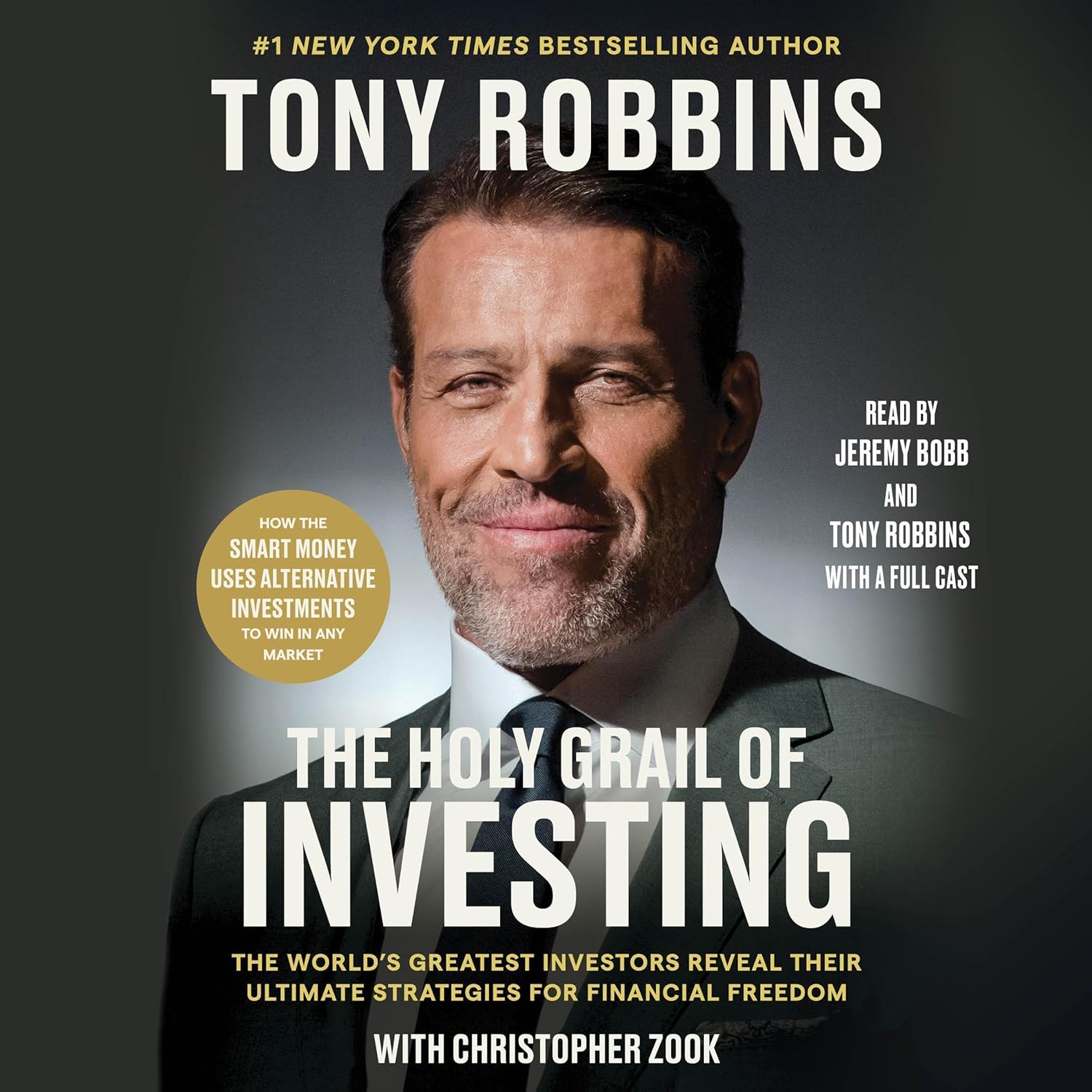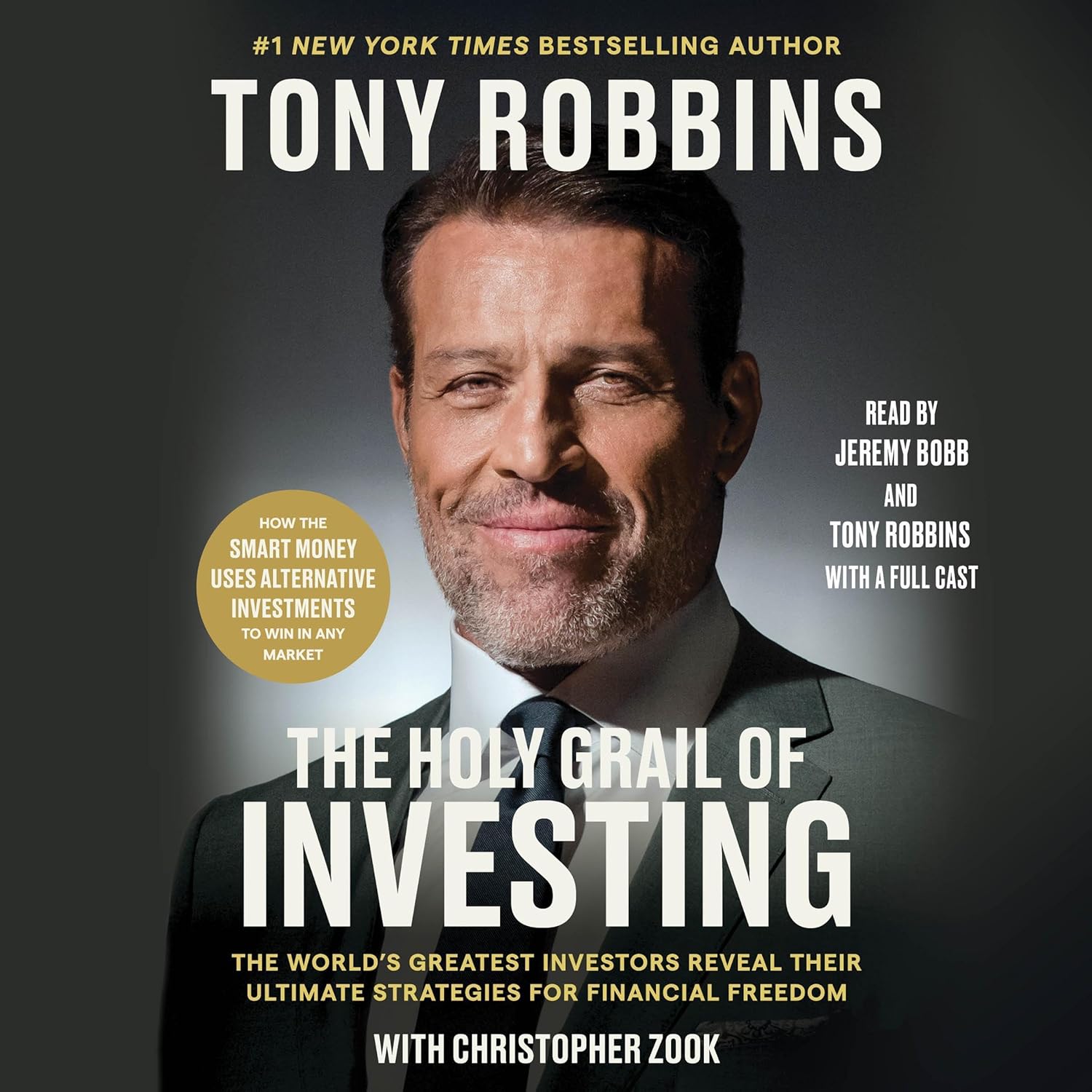As a passionate reader who enjoys delving into the realms of personal finance and investment strategies, I was excited to pick up Tony Robbins’ latest offering, The Holy Grail of Investing. This book, which marks the conclusion of his financial freedom trilogy, intrigued me not just because of Robbins’ reputation but also because it tackles a topic that is often clouded in complexity—alternative investments. After seeing the buzz around this title, particularly its emphasis on interviews with some of the world’s most successful investors, I decided to dive right in.
One of the standout aspects of this book is Robbins’ ability to distill complex financial concepts into digestible pieces. His conversations with titans of finance like Robert F. Smith and Vinod Khosla are both inspiring and enlightening, offering readers insights into the strategies that have led these individuals to success. As noted by other readers like Tommy Thompson, there truly is valuable information for everyone, whether you’re a seasoned investor or just starting—something I wholeheartedly agree with. As a relative newcomer to investing, I found this accessible approach especially refreshing.
Robbins begins by laying down the groundwork, covering fundamentals like goal setting and understanding risk tolerance. This foundational knowledge is exactly what can help new investors navigate the often-overwhelming landscape of finance. Amber, another reader, appreciated how Robbins avoided drowning readers in jargon, opting instead to present concepts through relatable anecdotes and practical advice. I found myself nodding in agreement with both of these sentiments as I read.
Another strong point is the book’s focus on mindset. Robbins highlights the psychological barriers that hinder many would-be investors, from the fear of making poor choices to the allure of chasing fleeting returns. This aspect resonated with me, as it aligns well with my experience of having to confront my own apprehensions regarding investing.
However, the book is not without its drawbacks. While Robbins covers a wealth of information, it occasionally feels like it flirts with being a promotional piece for certain investment managers. A few readers, including Shelby, felt that it strayed too far into a sales pitch and suggested that there are more straightforward, fact-based personal finance books available. I can understand that perspective; at times, I wondered whether the focus on high-profile investors may overshadow practical advice for everyday individuals.
Moreover, some readers expressed concern that the book may not provide actionable investment advice suitable for all levels of investors, noting that certain strategies might be more tailored to those with significant capital. This left me a bit uncertain about how to apply some concepts to my own financial situation, particularly in terms of jumping into private equity or venture capital.
Still, I can’t overlook the practical insights Robbins offers. I found the discussions on new regulations allowing individual investors to own stakes in professional sports teams and invest in renewable energy to be thought-provoking and timely. The details around alternative investments may be what potential investors overlook, but Robbins shines a light on these avenues in a way that feels both possible and enticing.
In conclusion, The Holy Grail of Investing provides a well-rounded introduction to various alternative investment strategies, even if it sometimes dances too closely to promotional territory. Its strengths lie in breaking down complex ideas into simpler, more accessible content. While it may leave some seasoned investors wanting for more concrete, actionable advice, it serves as an excellent resource for those just beginning to explore the investment landscape. Ultimately, I’d recommend it to anyone who’s curious about diversifying their portfolio or looking for innovative strategies to bolster their financial future. Just be prepared to sift through some sales-like edges and make sure you consult additional resources as you embark on your investing journey. Overall, I’d rate this book a solid four stars for its informative content and engaging style.
“Unlock the Secrets to Successful Investing” >>








